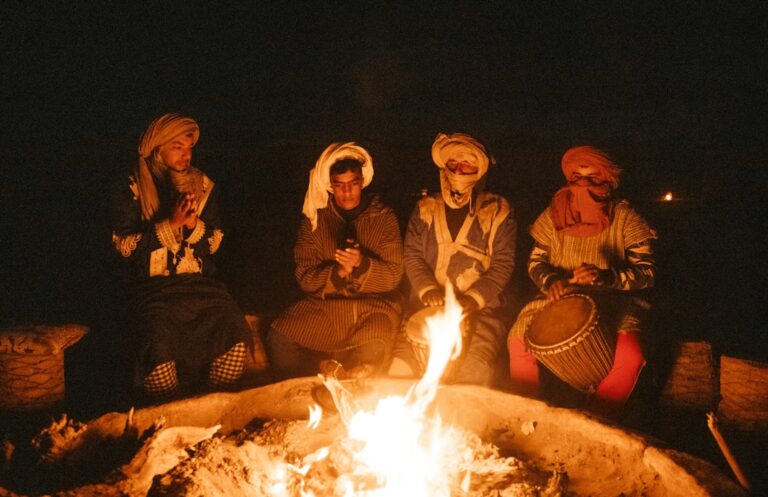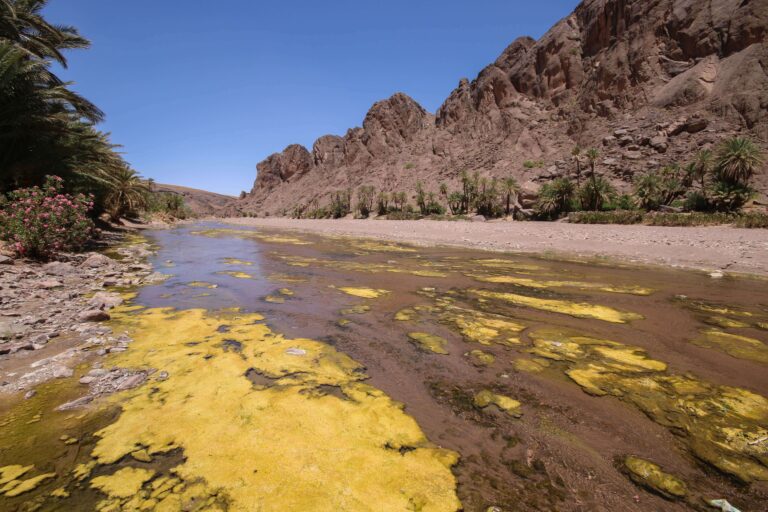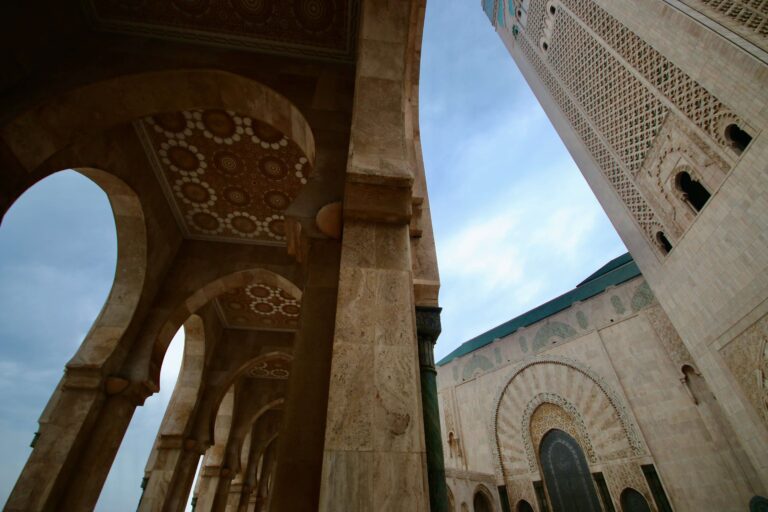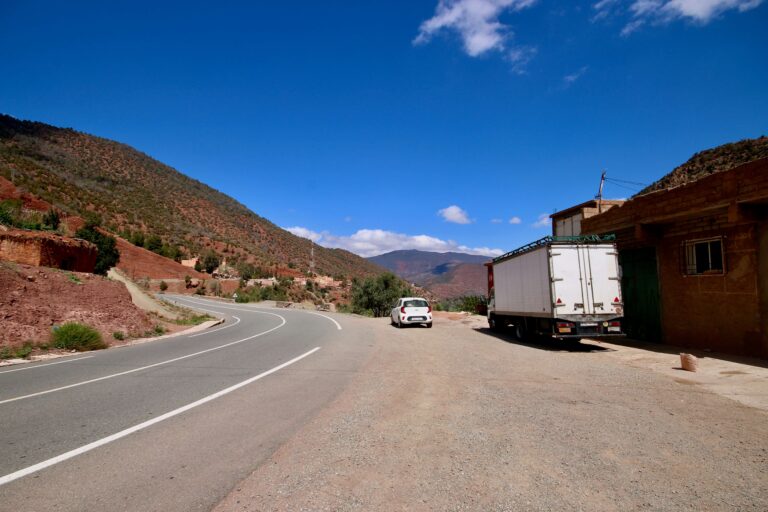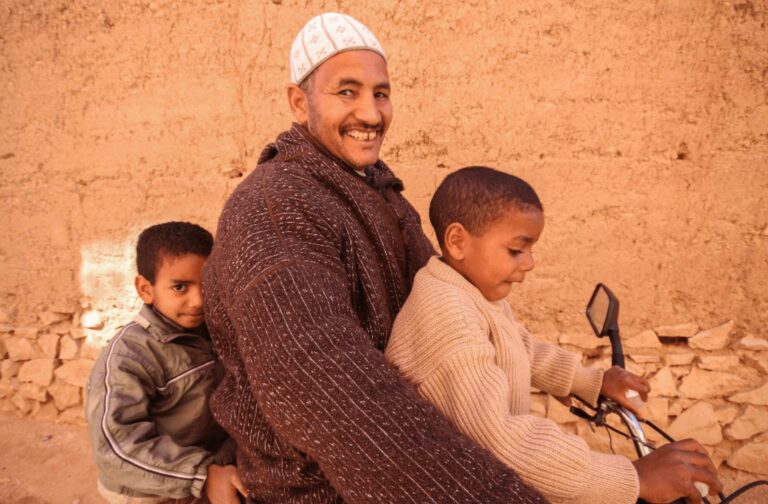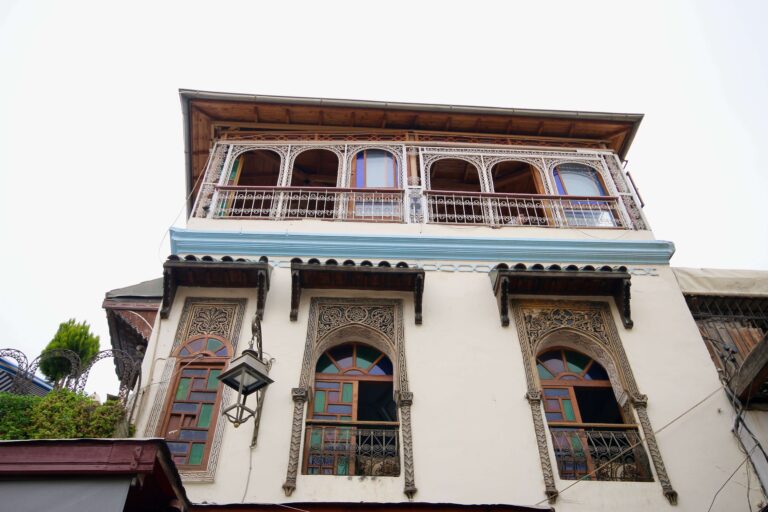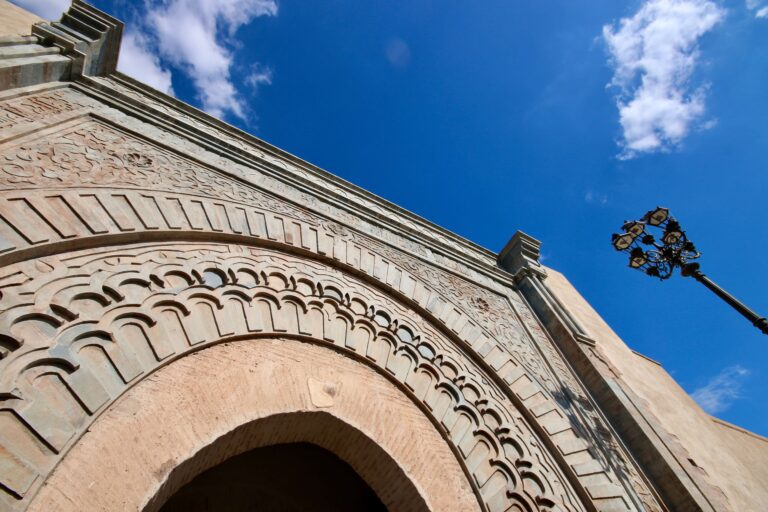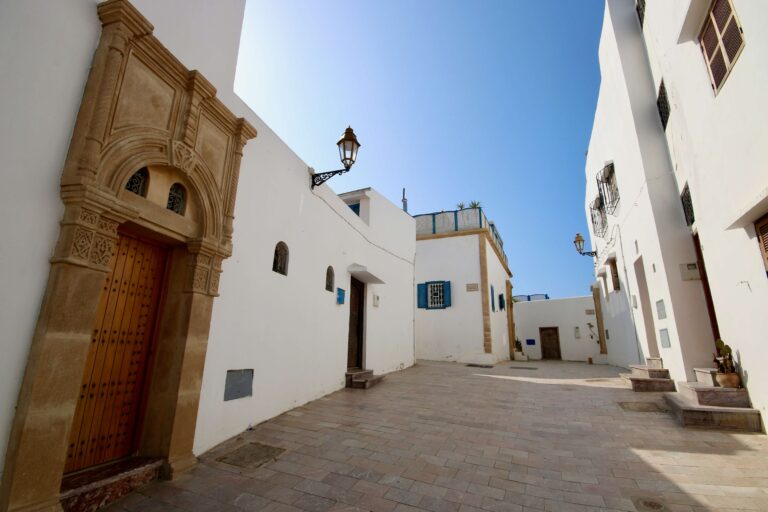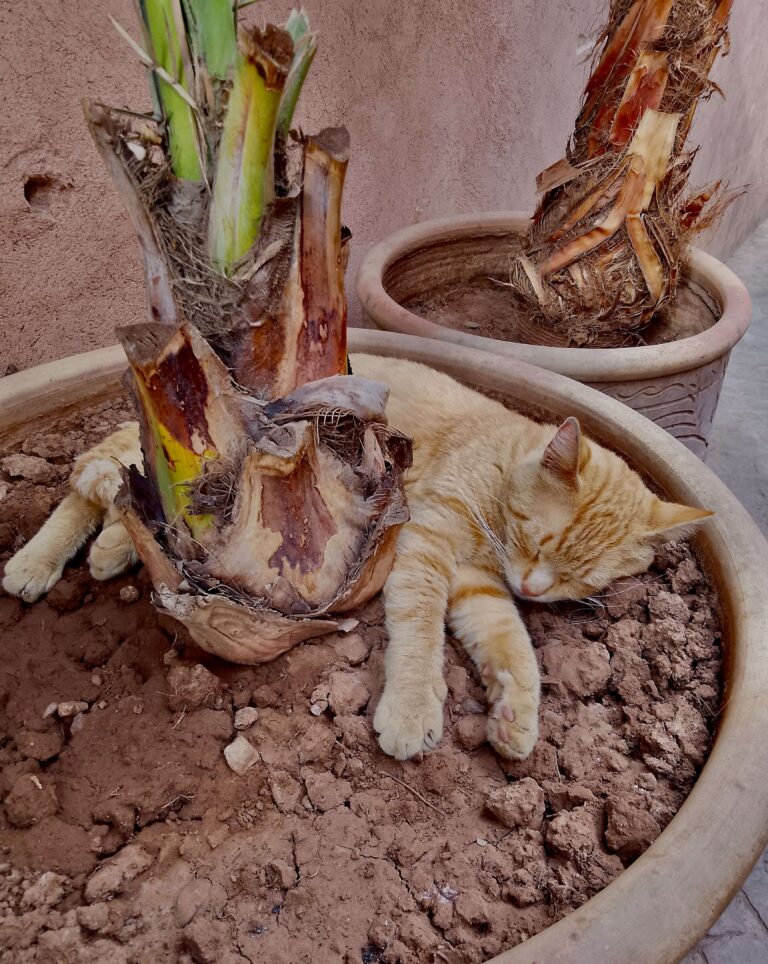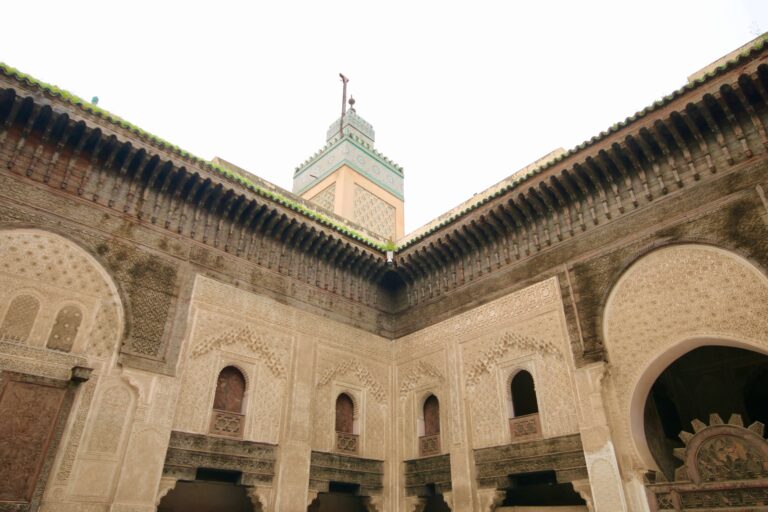Travelling by Bus in Morocco: Everything You Need to Know
If you’re thinking about travelling by bus in Morocco, a few questions probably come to mind. Are the buses reliable and safe? How easy is it to get around Morocco by bus? And which Moroccan bus companies are best to use? Read on to find answers to all of these questions and more in this detailed guide for independent travellers.
Buses really are what keep Morocco connected, serving all the routes that trains do and LOTS they don’t. While you can rely on trains for getting between big cities in the country’s north, it’s buses that will step up to serve you when travelling in the south.
I’ve travelled throughout Morocco by bus and have rarely had issues that drastically impacted my travel plans. Occasionally the buses have departed late and on more than one occasion I’ve been stuck in horrendous traffic in Casablanca. But more often than not, I arrive at my destination at the time indicated by the bus company.
Not only do buses connect to the coastal cities of Agadir and Essaouira but also the gateway towns for the Sahara Desert – Merzouga and M’Hamid. Buses are also the cheapest way of reaching the blue-hued city of Chefchaouen, a perennial tourist favourite in Morocco’s north.
One thing you’ll notice after arriving in Morocco is that there are HEAPS of bus companies to choose from. Some are temptingly cheap and others seemingly expensive.
I’m here to tell you that you get what you pay for when travelling by bus in Morocco. In my opinion, it’s worth spending a little more on a reliable company.
In this guide, I’ll explain everything you need to know as an independent traveller about getting around Morocco by bus. Discover the best Moroccan bus companies to use and how to buy tickets online, as well as what you can expect onboard.
If you want to learn more about getting around Morocco by train, head to my detailed guide here.

Disclosure: This article contains affiliate links, meaning I earn a small commission when you make a purchase. Affiliate links cost you nothing and ensure my content stays free!
KEY TAKEAWAYS:
- Overnight buses connect many Moroccan destinations – these are safe to use and can save you a night’s accommodation
- CTM and Supratours are the most comfortable and reliable Moroccan bus companies – they cover all the major routes and seating is reserved (no standing in the aisles)
- CTM often departs/arrives at a separate terminal from the city’s main bus station – always check the exact location ahead of time
- Bus tickets in Morocco are relatively affordable (usually cheaper than the trains) and can be purchased online via the bus company websites or using third-party platforms like 12Go and Omio.
- You can take small backpacks onboard Moroccan buses but larger backpacks and suitcases need to go in the hold and incur an additional charge of around 10 to 15 MAD (1 to 1.5 EUR)
- There are no toilets on Moroccan buses but they stop every couple of hours for breaks at petrol/gas stations – these usually have a small restaurant offering quick eats
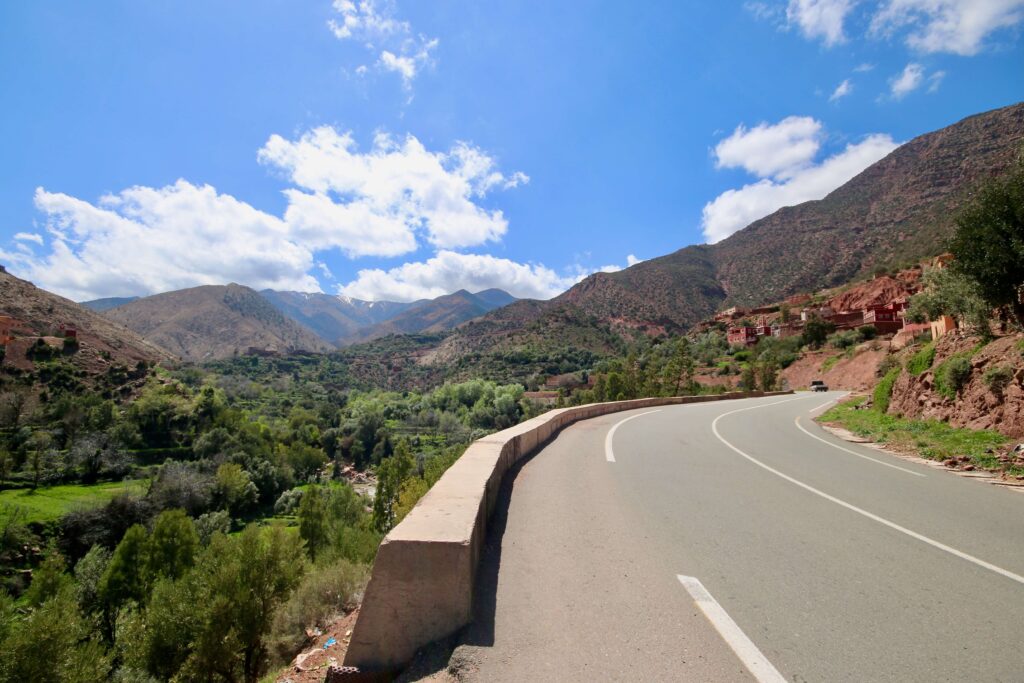
CTM/Supratours vs cheaper local buses
When travelling by bus in Morocco, there are two main companies that tourists use, CTM and Supratours. CTM (Compagnie de Transports au Maroc) is the national bus company of Morocco while Supratours is owned by ONCF, Morocco’s railway company.
Both CTM and Supratours buses are modern, air-conditioned coaches with reserved seating. Once they’re full, they’re full! They serve routes between most major cities in Morocco, although some routes are served solely by one company.
Supratours and CTM buses only stop at designated terminals/stations, which are scheduled into their timetable. While their tickets are more expensive compared to budget bus companies in Morocco, they have a better track record when it comes to safety and leaving on time.
The cheaper bus alternatives in Morocco are mostly smaller, local operators. Their fleets tend to be older buses, sometimes without air conditioning. Seating is first-come, first-served and the buses can get crowded, with people standing in the aisles once seats are full.
Compared to CTM or Supratours, the cheaper buses make more stops and take longer to reach their destinations. Aside from making scheduled stops in towns and cities, they may also pull over to pick up people on the side of the road. This can significantly add to transit times.
Safety standards and driving practices can also be less consistent, although that doesn’t mean they are necessarily dangerous. If you’re travelling to remote towns and villages in Morocco, one of the cheaper bus companies may be your only choice. But if the option is there, I’d recommend travelling with CTM or Supratours for comfort and peace of mind.
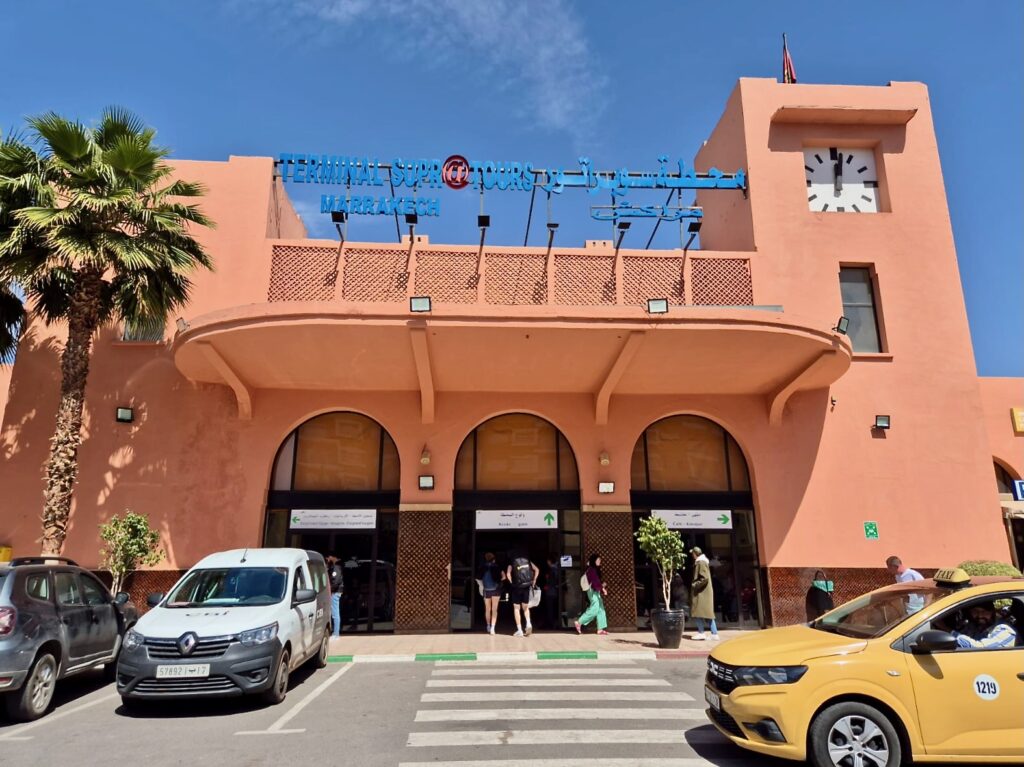
Buying tickets for buses in Morocco
Both CTM and Supratours boast multi-lingual websites that are easy to use. This means you can buy tickets from anywhere in the world. Just enter your preferred route, travel date and number of passengers in the search fields to see the available options.
But if you don’t know which bus company serves a particular route or if you want to compare various options, then I’d recommend using 12Go or Omio. After entering your departure and arrival cities, these comparison sites allow you to see a variety of bus services so you can pick the one that’s right for you.
Not only can you purchase bus tickets through 12Go and Omio but also flights and trains. In fact, the search results might show that travelling by train is more efficient than bus for your chosen route. It’s all about having options!
Popular Moroccan bus routes have several departures throughout the day, with travel times that may vary slightly based on traffic and the number of stops. Arriving in big cities like Casablanca around peak hour can significantly slow things down!
After selecting your bus, you’ll need to provide your name and contact details, then choose your preferred seat. If you prefer sitting near the front, it’s best to book early since those seats fill up quickly.
Top tip:
If you’re planning to take a bus in Morocco during the summer, it’s wise to pick a seat on the side that isn’t facing the sun. Even though the buses are equipped with air conditioning, the heat from direct sunshine can be uncomfortable. For journeys heading north to south, sit on the right side in the morning. If you’re travelling in the afternoon, opt for the left side. Switch things up for south to north rides.
If you’re purchasing online, you can pay for bus tickets in Morocco using a debit or credit card. Your ticket will be sent to your email in a digital format. If you encounter any issues downloading it, just visit one of the bus company’s counters at the station with your passport. They’ll print a ticket for you.
Prefer to pay in cash? You’ll need to visit the station and be issued a paper ticket. Alternatively, you can find CTM and Supratours offices in bigger city centres. This will save you a trip out their bus terminals. Check with Google or your hotel/riad for office locations.
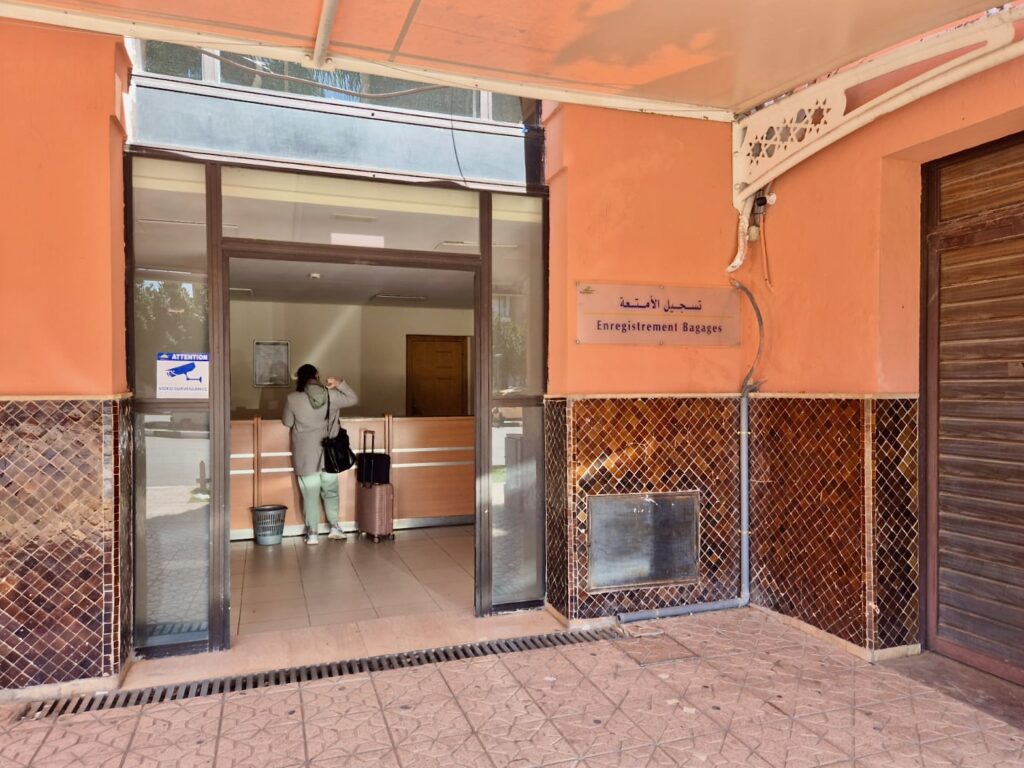
Paying for luggage on buses in Morocco
Any luggage that doesn’t fit beneath the seat in front of you or in the overhead compartments will need to be paid for before loading it onto the bus. Don’t worry! This is a really minimal fee of between 5 and 15 dirhams. But it’s worth factoring in when comparing bus ticket prices in Morocco.
Luggage is usually paid for at a separate counter from tickets, often outside near where the buses load. Simply tell the attendant how many bags you have and they’ll issue a ticket for each. This includes a sticker/tag that you put on the bag and a stub/receipt you keep.
If you haven’t bought a ticket for your bag and the driver deems it too big for upstairs, he’ll ask you to purchase a ticket.
When you disembark, someone will remove the bags from the hold and ask for your ticket stub to verify it’s yours. It’s a simple way of ensuring everyone ends up with their luggage. In this way, nobody has the opportunity to steal a bag that looks like it’s filled with gold!
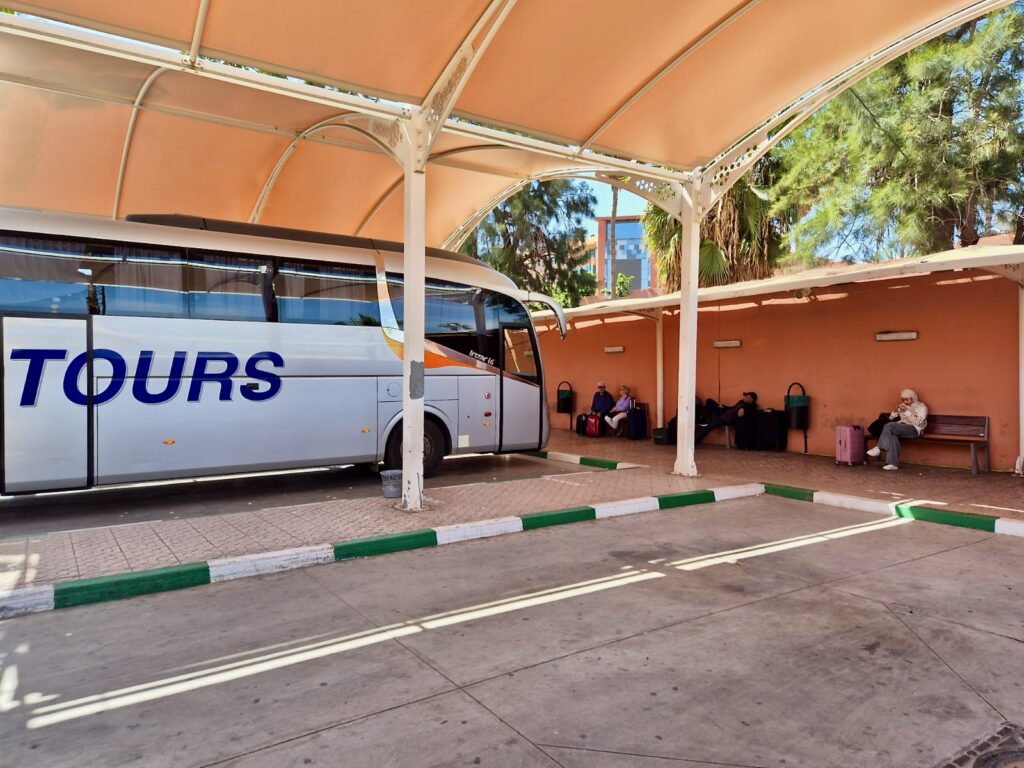
Bus stations in Morocco
In many Moroccan towns and cities, you’ll find a central bus station. This is referred to as the gare routière and it acts as the main hub for a variety of bus companies.
These stations are usually located on the outskirts rather than in the heart of the city. So you might need to walk or take a taxi to reach them.
That being said, CTM usually has its own terminals, which may be a fair distance from the main station. It’s always a good idea to verify your destination before heading to the bus station!
I usually do a quick Google search to find out where Supratours or CTM is operating from (depending on which company I’m travelling with) to avoid any unnecessary detours. You can also check with your hotel or riad. The staff are usually clued in as to where different companies depart from.
In Casablanca, the situation can be even more complicated. Here, CTM has three different terminals throughout the city – FAR, Ain Sebaa and Maarif. Make sure to check which terminal is nearest to your accommodation before you book your ticket.
Top tip:
If you’re connecting between trains and buses in Marrakech, I’d recommend travelling with Supratours as their terminal is right around the corner from the Marrakech railway station. You can walk there in five minutes!
Bus stations in Morocco come in all shapes and sizes (or should I say levels of cleanliness?) Most of the bigger stations are really clean, with good (sometimes free) toilet facilities and cafes where you can grab a coffee or tea while waiting for your departure.
In some smaller towns, however, the situation is completely different, with no facilities and toilets in less than appealing condition. Remember, always have a few dirhams on you to pay toilet attendants and bring your own paper, just in case!
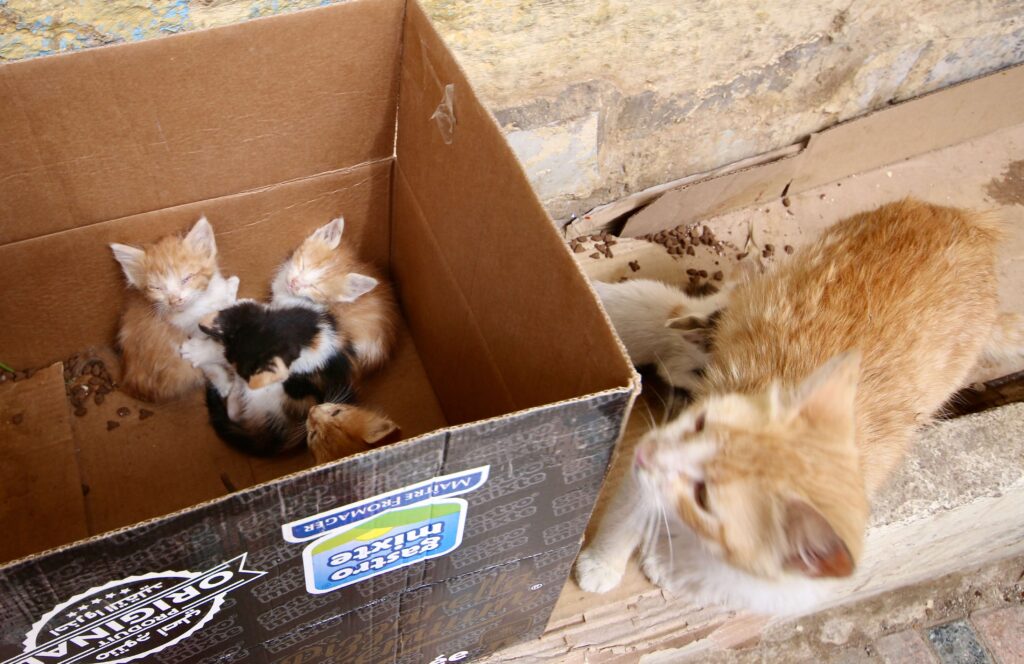
What to expect on Moroccan buses
Travelling by bus in Morocco is relatively straightforward, particularly if you’re departing from a station (rather than hailing one on the side of the road). I suggest arriving at least 15 minutes before your bus is set to leave. This gives you time to find the departure bay and purchase a ticket for any luggage you may have.
When it’s time to board, take your bag to the hold and hand it to the attendant, who will pack the luggage depending on its destination. Before getting on the bus, you’ll need to show your ticket and have your name crossed off the passenger list.
Once onboard, look for your seat number, which will be clearly marked, usually above. It’s important to sit in your assigned seat to prevent any mix-ups, particularly considering you might have to negotiate seat changes in a language you’re not fluent in.
Small bags can be stored under the seat in front of you or in the overhead compartment. Although I’d recommend keeping valuables on you.
If you want to recline your seat, it’s generally polite to wait until the people behind you have boarded. It can be tricky for them to access their seats if yours is pushed right back.
Also, keep in mind that there are usually no restrooms on buses in Morocco. So it’s a good idea to use the station facilities before you get on. Once you’re comfortably seated, just relax and enjoy the scenery outside your window!
Top tip:
At public restrooms in Morocco, it’s customary to tip the attendant a few dirhams, so make sure to have some small change handy.
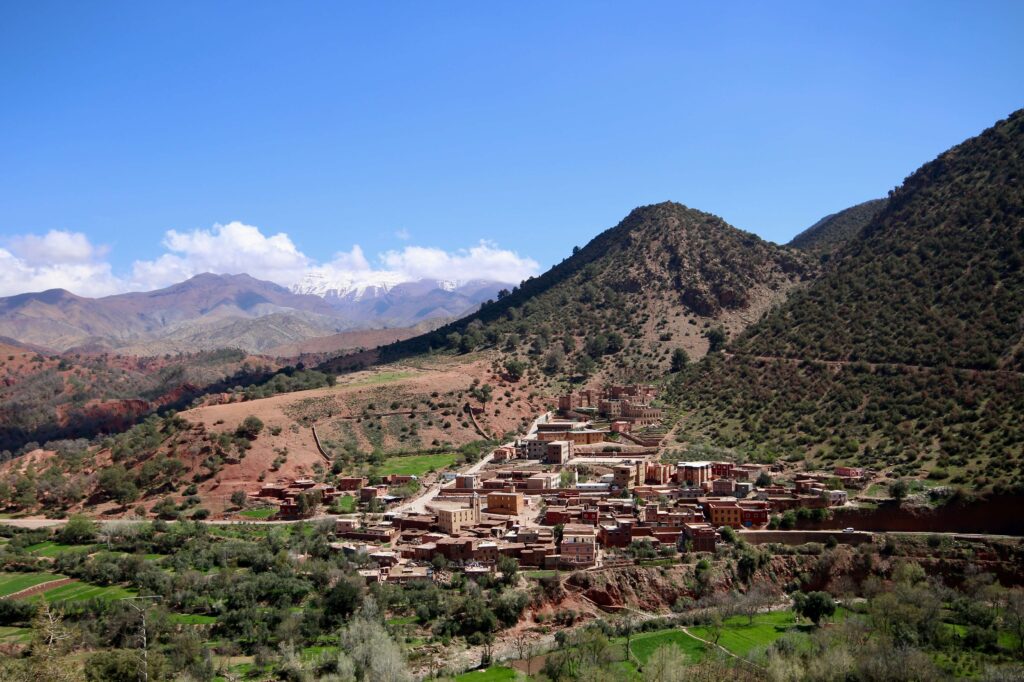
CTM and Supratours buses take breaks every few hours for restroom stops, giving you a chance to stretch your legs and grab drinks/snacks. Typically, these stops are at rather dull gas stations, some of which have a restaurant serving quickly prepared meals.
When you stop, the driver will tell you how long the break will be, usually in Darija and French. If you don’t understand, check with him as you alight or ask another passenger. When it’s time to continue the journey, the driver will sound the horn loudly and conduct a headcount. It’s hard to get left behind.
Top tip:
Many of the CTM and Supratours buses that link major Moroccan cities operate on autoroutes/motorways, which are relatively straight and smooth. However, if you’re heading through the countryside or taking the Tangier to Chefchaouen route, be aware that the roads can be reallllly winding. If you experience motion sickness, try to book early to get a seat near the front of the bus.
I also love the camaraderie of travelling around Morocco by bus because you are travelling with….actual Moroccans! There’s always the opportunity to strike up a conversation when you stop for breaks and get local insights into your next destination. You can learn a lot about the country on those long travel days.
Overnight buses in Morocco
In Morocco, some long-distance bus routes run overnight, which can save you the expense of a night’s stay in a hotel or riad. Most arrive early in the morning, meaning you can head out straight away and spend the day exploring.
However, the downside of travelling overnight by bus in Morocco is that you miss out on the scenery along the way, which in many parts of the country is magnificent. Some travellers also feel less safe travelling by bus at night than during the daytime.
Popular overnight bus routes in Morocco include Casablanca to Agadir, Marrakech to Tangier and Fes to Merzouga.
FAQs about travelling by bus in Morocco
Can you travel by bus in Morocco?
Yes, Morocco has an extensive network of bus routes connecting major cities and smaller towns. Several private bus companies, such as Supratours and CTM, operate comfortable coaches that have good safety records. As a general rule, their services leave on time.
These are equipped with modern amenities like air conditioning and reclining seats, which are provided on a reservation-only basis.
To reach more remote destinations, you may need to rely on cheaper, local buses. These tend to be more crowded and slower. Seating on these buses is not reserved but offered on a first-come, first-served basis. Sometimes passengers are left standing in the aisle.
Ticket prices for buses in Morocco are reasonable, making them an economical option for budget-conscious travellers. While buses are generally safe and reliable, it’s advisable to keep valuables secure. Always be aware of your surroundings, especially in busy stations and on overnight buses.
Is it safe to take a bus in Morocco?
Travelling around Morocco by bus is generally a safe way to explore the country, provided you exercise normal precautions. CTM and Supratours are among the safest companies as seats are designated and passenger information must be provided to purchase a seat.
On cheaper, local buses, passengers may be picked up at the side of the road. This increases the chance of shady characters getting away with petty crimes onboard. These buses can also get much more crowded, making it difficult to keep an eye on personal belongings.
If possible, avoid taking buses late at night. If you do, try to sit closer to the front near the driver. Some passengers, especially women travelling solo, may feel more comfortable sitting next to other women rather than men they don’t know. This can be requested when purchasing your ticket.
What is the best way to get around in Morocco?
The best way to travel around Morocco largely depends on where you want to go. For longer distances between major cities in the country’s north, travelling by train is ideal. Operated by ONCF, Moroccan trains are comfortable and efficient, with air-conditioned carriages and two choices of classes – first and second.
The best way to get around Morocco’s south, however, is by bus. The railway network only extends as far as Marrakech. Morocco’s bus network is far more extensive, connecting cities, towns and villages not served by train. CTM and Supratours are the main private bus companies, while smaller local buses access remote towns and villages.
For shorter trips, shared grand taxis, carrying up to six passengers, are a fast and popular option, operating on set routes between towns and cities. In major cities, petit taxis (usually metered) can be hailed for local trips within the city limits, although they often pick up more than one passenger.
For more flexibility and independence, renting a car is a convenient option and driving in Morocco is less challenging than you might think. In many towns and cities, walking is the best way to explore, particularly within the narrow streets of historic medinas.
Is public transportation good in Morocco?
Generally speaking, public transportation in Morocco is quite good, with several different affordable and convenient options for getting around the country. Trains operated by the national rail company ONCF connect major cities like Casablanca, Rabat, Fes and Tangier in Morocco’s north, as well as extending as far south as Marrakech.
Buses tend to be slightly more affordable and cover southern routes that are not on the rail network. While cheaper buses can be crowded and make frequent stops (resulting in slow journeys), both CTM and Supratours buses are comfortable and efficient.
Shared grand taxis carrying up to six passengers operate set routes between towns and are a fast and economical way to get around. That being said, they can be squishy and aren’t ideal if you’re travelling with big luggage.
Within cities, local buses are readily available and inexpensive for getting from A to B. Larger cities like Casablanca and Rabat also have efficient and modern tram lines operating on limited routes.

PLAN YOUR TRIP WITH MY FAVOURITE RESOURCES:
Find hotels via Booking
Book tours and attractions via Viator or GetYourGuide
Find a rental car via Discover Cars
Book flights via Kiwi or Booking
Search for buses and trains via 12Go or Omio
Get travel insurance via SafetyWing
Buy a digital eSIM with Airalo
By purchasing through my links, you’ll be supporting my website at no additional cost to you
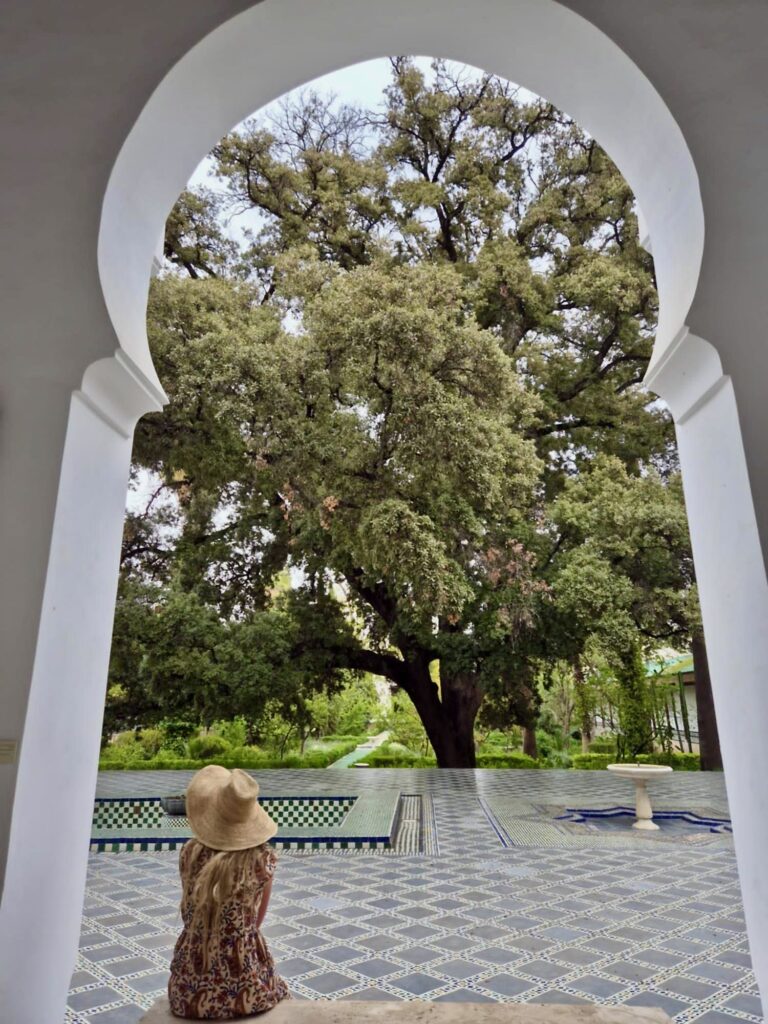
About Me
I’m Malika, a global traveller who first visited Morocco in 2014 before marrying a local and settling down in a little village on the Atlantic coast. Over the years, I’ve developed an intense love for Morocco, its incredible landscapes, storied cities and the exceptionally generous hospitality of its people.
Malika in Morocco is a place to share my years of experience exploring the country, from north to south and from the Atlantic Ocean to the Sahara Desert. As a resource for travellers visiting Morocco, I want to encourage others to experience this captivating destination the way they desire, whether that’s independently or under the expert guidance of local tour operators.
I believe strongly in supporting responsible and sustainable tourism initiatives while inspiring travel experiences that are life-impacting and mutually beneficial for both travellers and locals.
-
Meet the indigenous Amazigh people of Morocco
Often referred to as “Berbers”, the Amazigh people of Morocco are a diverse collection of ethnic groups Indigenous to North Africa. While they are concentrated primarily in the Maghreb region (Algeria, Libya, Mauritania, Tunisia and Morocco), they can also be found in northern Mali and northern Niger. Predating the arrival of Arabs in the region,…
-
Should I Get Travel Insurance For Morocco? Everything to Know
Whether you’re travelling to Morocco on a one-off trip or living a semi-nomadic lifestyle in the country, travel insurance should be a top priority before you head off. I’m someone who never travels abroad without travel insurance. It was drummed into me by my parents when I was young that it just wasn’t worth the risk. After…
-
Visiting Morocco’s Sahara Desert: Everything You Need to Know
Planning on visiting Morocco’s Sahara Desert? Discover everything you need to know to plan an incredible visit, from the best tours and self-drive itineraries to highly-rated desert camps. One of the most transformative experiences I’ve had in Morocco was spending a night under the star-studded sky of the Sahara Desert. Not only did I feel…
-
Renting a Car in Casablanca: Everything You Need to Know
Thinking about renting a car in Casablanca? Discover everything you need to know, from road conditions to safety issues and car hire costs in Morocco. Casablanca is Morocco’s main aviation gateway and the first port of call for many international travellers. So it makes sense that it’s also one of the best places to rent a car…
-
Renting a Car in Marrakech: Everything You Need to Know
Renting a car in Marrakech is a fantastic way to explore southern Morocco on your own terms. This is particularly ture if you want to visit the Sahara Desert, follow the Route of 1000 Kasbahs or venture into the spectacular gorges of Dades and Todra. While the train and bus networks in Morocco cover a…
-
Everything You Need to Know About Driving in Morocco
Planning a road trip in Morocco? Read on to discover everything you need to know about driving in Morocco, from road conditions to safety issues and renting a car. With its mix of bustling cities and vast open landscapes, Morocco offers a wide array of experiences behind the wheel. It’s an incredible destination for a…

